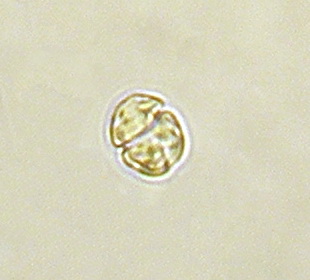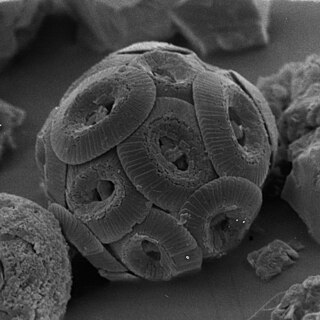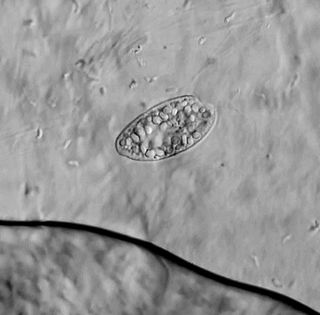| Cylindrospermopsis | |
|---|---|
| Scientific classification | |
| Domain: | Bacteria |
| Phylum: | Cyanobacteria |
| Class: | Cyanophyceae |
| Order: | Nostocales |
| Family: | Aphanizomenonaceae |
| Genus: | Cylindrospermopsis Seenayya & Subbaraju, 1972 |
Cylindrospermopsis is a planktonic genus of filamentous cyanobacteria known for its blooms in eutrophic waters. The type species is the tropical Cylindrospermopsis raciborskii (Woloszynska) Seenayya & Subbaraju. The cyanotoxin cylindrospermopsin was first identified from a species of this genus. [1]

Plankton are the diverse collection of organisms that live in large bodies of water and are unable to swim against a current. The individual organisms constituting plankton are called plankters. They provide a crucial source of food to many large aquatic organisms, such as fish and whales.
A genus is a taxonomic rank used in the biological classification of living and fossil organisms, as well as viruses, in biology. In the hierarchy of biological classification, genus comes above species and below family. In binomial nomenclature, the genus name forms the first part of the binomial species name for each species within the genus.

Cyanobacteria, also known as Cyanophyta, are a phylum of bacteria that obtain their energy through photosynthesis and are the only photosynthetic prokaryotes able to produce oxygen. The name cyanobacteria comes from the color of the bacteria. Cyanobacteria, which are prokaryotes, are also called "blue-green algae", though the term algae in modern usage is restricted to eukaryotes. The cyanobacteria appears to have originated in freshwater or a terrestrial environment.









